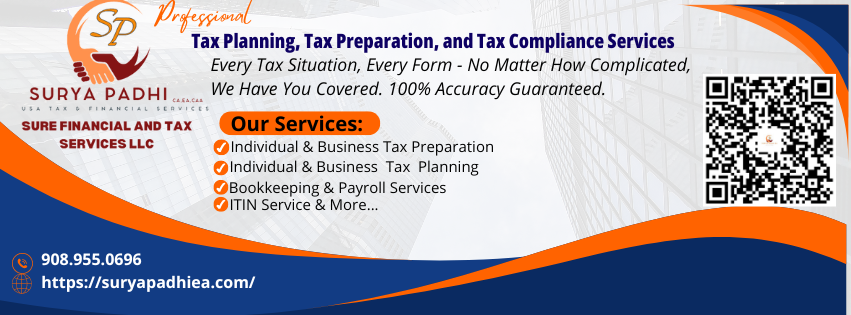
For real estate investors, tax deferral can be a key strategy in maximizing profits and reinvesting in new opportunities. One of the most effective ways to defer taxes on the sale of investment property is through a Section 1031 Exchange. Named after Section 1031 of the Internal Revenue Code (IRC), this tax provision allows investors to defer paying capital gains taxes when they sell investment property and use the proceeds to buy another property of “like-kind.”
In this article, we’ll explore the basics of a 1031 exchange, how it works, and some common scenarios where it can be useful.
What is a Section 1031 Exchange?
A Section 1031 Exchange, also known as a like-kind exchange or tax-deferred exchange, allows real estate investors to sell an investment property and defer the capital gains tax liability by reinvesting the proceeds in a like-kind property. This process helps investors leverage the full value of their sale for future investments rather than immediately paying taxes on any gains.
Key benefits of a 1031 Exchange include:
- Tax Deferral: Capital gains taxes are deferred, allowing for more capital to be reinvested into new property.
- Wealth Building: Investors can grow their portfolios faster by continuously rolling over gains into new properties.
- Flexibility: The exchange can involve multiple properties or different types of real estate, provided the properties are like-kind.
How Does a 1031 Exchange Work?
To qualify for tax deferral under Section 1031, several strict requirements must be met:
- Like-Kind Property Requirement:
- The properties involved in the exchange must be “like-kind,” meaning they are of the same nature or character, even if they differ in grade or quality. For example, you can exchange a rental property for a commercial building or an empty lot for an apartment complex.
- Personal residences and properties held primarily for sale (like fix-and-flip homes) generally do not qualify.
- 45-Day Identification Period:
- After selling your investment property (referred to as the relinquished property), you must identify potential replacement properties within 45 days. You can identify up to three properties, or more under certain conditions.
- 180-Day Purchase Period:
- You must complete the purchase of one or more of the identified replacement properties within 180 days from the sale of your relinquished property. This strict deadline includes weekends and holidays.
- Use of a Qualified Intermediary (QI):
- The IRS requires that a Qualified Intermediary (QI) facilitate the exchange. The QI holds the proceeds from the sale of the relinquished property and uses them to purchase the replacement property. The investor cannot directly receive the sale proceeds; otherwise, the exchange may be disqualified.
Common Scenarios for Using a 1031 Exchange
Here are a few examples of how real estate investors might use a Section 1031 Exchange:
- Trading Up for Larger Properties: An investor sells a small rental property and uses a 1031 exchange to purchase a larger multi-family building or commercial property, allowing them to grow their real estate portfolio without immediately paying capital gains taxes.
- Diversifying Real Estate Holdings: An investor might want to diversify their holdings by exchanging one type of property for another. For instance, selling a commercial property to invest in multiple residential units can allow for better risk management.
- Estate Planning: A 1031 exchange can be part of a long-term estate planning strategy. Investors can defer taxes indefinitely by continuously reinvesting in new properties, and upon death, the beneficiaries may inherit the properties with a “stepped-up basis,” potentially eliminating the deferred capital gains taxes altogether.
Special Considerations: When the Sale and Purchase Span Two Calendar Years
One common question is what happens if the sale and purchase of properties occur in different tax years. For instance, an investor might sell their property in December of one year and purchase a replacement property in the following calendar year. In this case, the exchange is still valid as long as it meets the 180-day timeline. However, tax reporting becomes a bit more nuanced.
- Tax Reporting in the Year of Sale: Even though the replacement property is purchased in the following year, capital gains from the sale of the relinquished property are deferred as long as the exchange qualifies.
- Installment Sale Treatment: If the exchange fails, such as when a replacement property is not purchased within 180 days, the transaction might be treated as an installment sale under IRS rules, and the gain could be recognized in the year the proceeds are received.
Pitfalls to Avoid in a 1031 Exchange
While a Section 1031 Exchange is a valuable tool, it’s important to follow the rules carefully. Here are some common mistakes to avoid:
- Missing Deadlines: Failure to meet the 45-day identification or 180-day completion period can disqualify the exchange.
- Improper Use of Proceeds: Any proceeds received directly by the seller (instead of through the QI) may be taxable as capital gains.
- Non-Like-Kind Property: The exchange must involve like-kind properties. Personal residences or vacation homes typically do not qualify unless specific conditions are met.
Conclusion
A Section 1031 Exchange is a powerful tool for real estate investors seeking to defer capital gains taxes and reinvest in new opportunities. By adhering to the strict IRS guidelines and deadlines, investors can grow their portfolios while benefiting from significant tax savings. As with any tax strategy, it’s important to consult with a tax professional or attorney experienced in 1031 exchanges to ensure compliance with the rules.
Are you considering a 1031 Exchange for your next real estate investment? Reach out to us for expert advice on how to structure your exchange for maximum benefit.
Disclaimer: This article is for informational purposes only and does not constitute legal or tax advice. Always consult with a qualified tax advisor before entering into a 1031 exchange.

